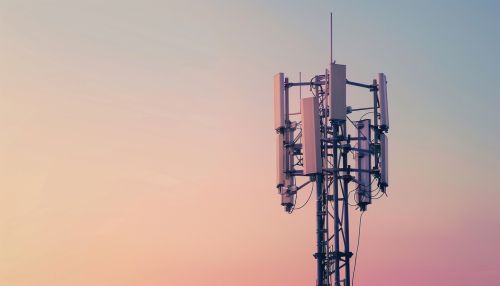5G
Overview
5G, or fifth generation technology, is the latest iteration of cellular technology, engineered to greatly increase the speed and responsiveness of wireless networks. With 5G, data transmitted over wireless broadband connections could travel at rates as high as 20 Gbps by some estimates -- exceeding wireline network speeds -- as well as offer latency of 1 ms or lower for uses that require real-time feedback. 5G New Radio can include lower frequencies (FR1), below 6 GHz, and higher frequencies (FR2), above 24 GHz. However, the speed and latency of 5G depends on the specific spectrum that the carrier uses.
Technology
5G networks are digital cellular networks, in which the service area covered by providers is divided into small geographical areas called cells. Analog signals representing sounds and images are digitized in the phone, converted by an analog-to-digital converter and transmitted as a stream of bits. All the 5G wireless devices in a cell communicate by radio waves with a local antenna array and low power automated transceiver (transmitter and receiver) in the cell, over frequency channels assigned by the transceiver from a common pool of frequencies, which are reused in geographically separated cells. The local antennas are connected with the telephone network and the Internet by a high bandwidth optical fiber or wireless backhaul connection. As in other cell networks, a mobile device crossing from one cell to another is automatically "handed off" seamlessly to the new cell.
Performance
5G NR speed in sub-6 GHz bands can be slightly higher than the 4G with a similar amount of spectrum and antennas, although some 3GPP 5G networks will be slower than some advanced 4G networks, such as T-Mobile's LTE/LAA network, which achieves 500+ Mbit/s in Manhattan and Chicago. The 5G specification allows LAA (License Assisted Access) as well but LAA in 5G has not been demonstrated. Adding LAA to an existing 4G configuration can add hundreds of megabits per second to the speed, but this is an extension of 4G, not a new part of the 5G standard.
Deployment
The deployment of 5G networks, much like previous generations, requires operators to install new equipment and upgrade existing cell towers. While this process can be time-consuming and expensive, the improved capacity and speed of 5G networks make the investment worthwhile for many operators. In addition, the use of higher frequency bands for 5G networks means that signals are not able to penetrate buildings and walls as effectively as previous generations, requiring the installation of additional small cell sites.
Applications
5G technology can be used for a variety of applications, including wireless and mobile broadband, IoT (Internet of Things), mission critical applications, and broadcast-like services. The increased speed, capacity, and connectivity offered by 5G networks make it an ideal choice for these applications, providing more reliable and efficient services.
Challenges
Despite the many benefits of 5G, the technology also presents a number of challenges. These include the need for significant infrastructure upgrades, concerns over potential health effects, and issues related to data privacy and security. In addition, the use of higher frequency bands for 5G networks means that signals are not able to penetrate buildings and walls as effectively as previous generations, requiring the installation of additional small cell sites.


